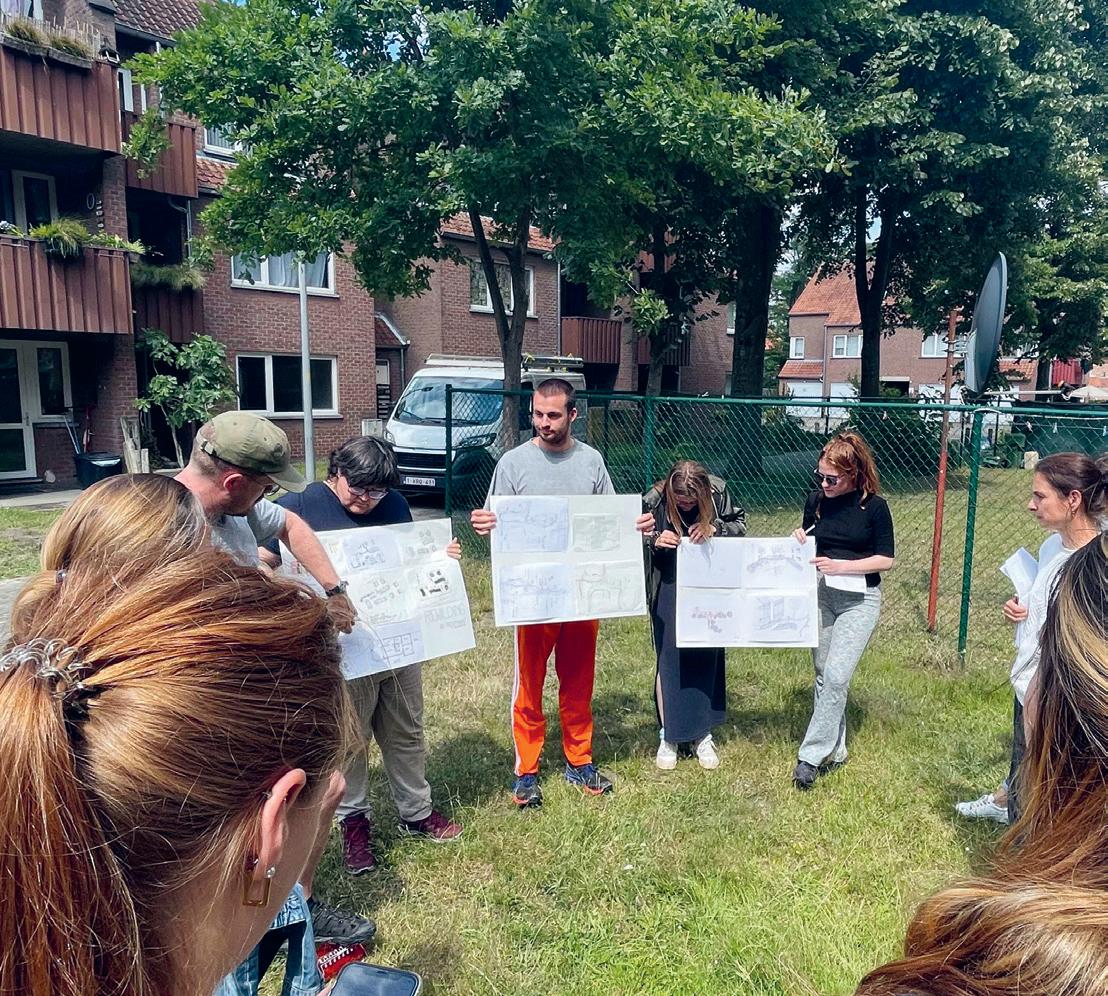
3 minute read
RE-WILDING
While many houses in these settlements are still owned by the social housing organisation Nieuw Dak, some are privately owned. Often, houses have been renovated and extended, but they still lack energy efficiency and adaptivity to family dynamics. The houses were built in a time where individuals did not own cars for example and did not have the same requirements of modern-day life. This creates a tension between the buildings created over 100 years ago and the 21st century post-industrial communities living there. It is this lack of cohesion along with the heritage status of the “garden city” design which gives true purpose to the workshop taking place here. Public space however is still abundant, but it resists a more differentiated and collective use by its communities. Originally, the design of public space mainly answered transportation needs. These historically different social groups were unambiguously allocated to certain areas. So, the spatial and social model of the garden city no longer corresponds with the reality of contemporary life. Hence, these settlements face major challenges in both cultural and ecological regard to become the sustainable and resilient cities and communities we strive for today. One strategy that can address both cultural and ecological diversity is embracing actors who have been marginalised in the design of such over orderly public spaces. By involving these “silent actors” in the design process, one enhances opportunities for cultural identification and collective use of public space. In this strategy an explicit role is given to nature and diverse cultural groups, one is able to allow for diverse appropriations of public space, as a means of “re-wilding”. In this respect “re-wilding” is not limited to “greening” the neigbourhood using design interventions, but is the basis for a new and flourishing community life. At the same time, re-wilding strategies tackle environmental concerns by introducing a fundamental shift from grey to green matter. Workshop participants used previous research results that focused on identifying “green” patterns of differentiated use of public space by prototyping real-life “re-wilding” interventions with and for the inhabitants of Winterslag. Although these “re-wilding” interventions subvert the overarching orderly nature of garden cities, they are first and foremost a means to encourage communities to gain control and responsibility of their living environment. Students were introduced to the sites and their inhabitants and by the end of the workshop produced a re-wilding intervention to increase this neighbourhood’s connectivity to nature in both implicit and explicit ways.
Four Design Capabilities
Inspired by the work of Annemarie Mol, the workshop was pedagogically structured for participants to learn about four ways of being in, thinking about, relating to and acting on their respective sites. “Being” is about the bodily experience of being in a situation. “Knowing” is something which develops not from a distance, but involves acting and valuing knowledge with others on location. “Doing” with others takes an iterative form of acting with the materialities on the site: building, deconstructing, repurposing etc. It involves a lot of actors, here and there, now and then. Doing is ambivalent, it is not good for everyone, not good enough and goes on and on. “Relating” with others is about relating with different worlds in sustaining future designs.
To support being, knowing, doing and relating to the sites, students are trained in four design capabilities that are the result of ongoing UHasselt research: re-tracing, re-connecting, re-imagining and re-institutioning.
• Re-Tracing: Instead of teaching students to only project their expert views of the world and on certain groups, we teach them to enter into relation with diverse actors by actively tracing their material and social ways of experiencing the world, using design anthropological approaches. During the live labs students gain capabilities to research and represent these world experiences and views through maps, videos, interviews and so on.
• Re-Connecting: We train students in connecting between actors and their projects, designing translations between their worlds. Students are trained in organising gatherings where different actors can share experiences and projects via workshops, markets, interventions etc.
• Re-Imagining: We train students in capabilities to reimagine together with diverse groups of stakeholders based on their newly formed relations, alternatives for their environment. Through “making” live built interventions, students learn to make future imaginations tangible.
• Re-Institutioining: We train students in developing capabilities to sustain newly formed relations between actors to continue by connecting them to institutional actors and shaping them into living labs and other types of organisations.
To train and explore these design capabilities on site, each group started with three “lenses” for the initial mapping of their site; material borders – both public and private, natural processes, and human appropriations. These mappings resulted in a first pitch-event in the presence of local social workers, inhabitants and representatives of the municipality and the local social housing organisation Nieuw Dak.
Taking into account the new information from these events, each group adapted their initial proposals to address the issues at hand and built and presented a final design intervention on site on the last day of the workshop.
FOCUS AREAS OF THE WORKSHOP REGARDING THE 17 SDGS.
















